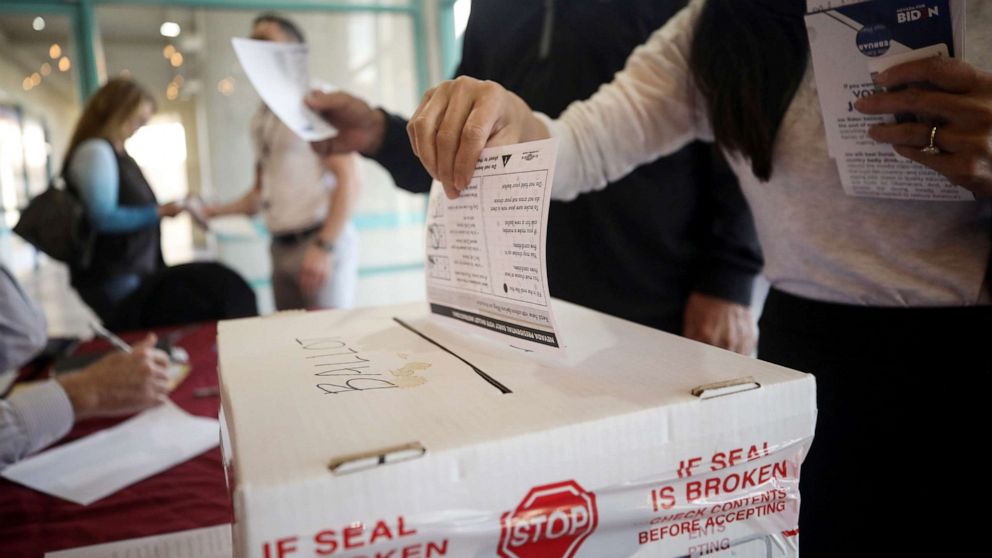Nevada caucuses offer first diverse test of the 2020 primary: Here's how they work
Nevada Democrats, seeking to overcome the turmoil that plagued the Iowa caucuses, are holding the highly-anticipated second caucuses of the campaign season on Saturday, up against renewed concerns over the complex electoral process.
However, the first-in-the-west contest is already off to an enthusiastic start. Nearly 75,000 Nevada Democrats, a majority of which were first-time caucusgoers, cast a ballot across four days of in-person early voting -- introduced for the first time this election -- according to the state party. By comparison, about 84,000 voters overall took part in the 2016 Nevada caucuses, bringing turnout for 2020 to almost 90% of the total in the last presidential cycle.
The strong early turnout numbers in Nevada come after Iowa’s results were marred by a flawed mobile app and reporting inconsistencies. The Nevada Democratic Party abandoned its plan to use the same app on its caucus day -- and Democrats are confident what happened in Iowa will not happen in Nevada.
"I have a lot of confidence in Nevada -- a really, really strong party," Democratic National Committee Chairman Tom Perez said on CNN Wednesday. "We have gone to school on the lessons of Iowa. We're as low tech as humanly possible while still preserving efficiency."
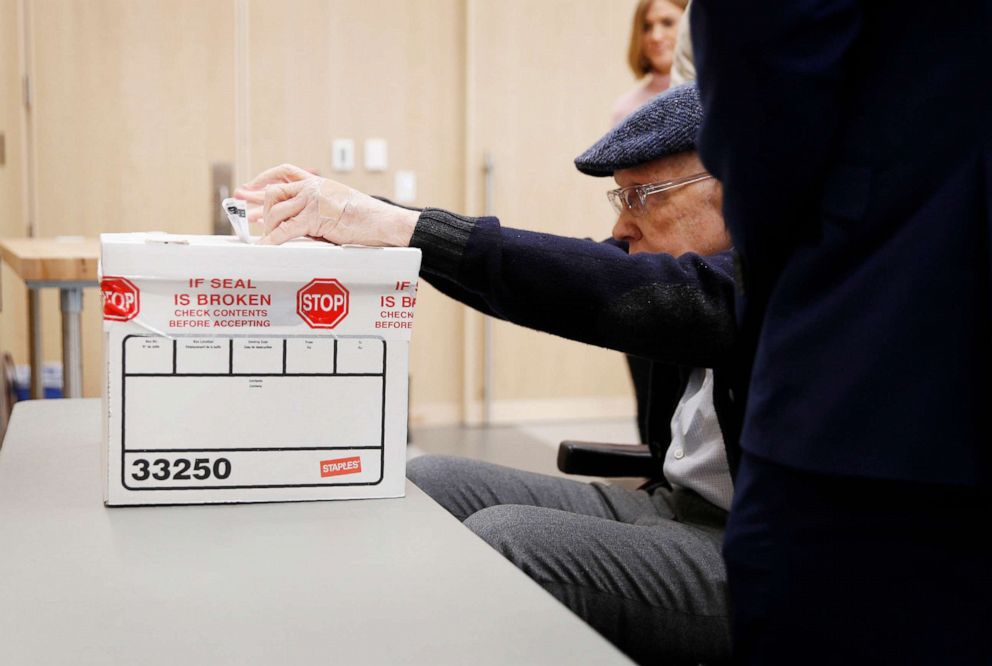
Former Senate Majority Leader Harry Reid, the most prominent Democrat to have represented the state in the Senate, echoed Perez, telling ABC News Wednesday that the Nevada Democrats have "the best state party organization in the country."
"We aren't using any of (Iowa's) software. We're using nothing that they had, and we feel very comfortable that we're going to have a good, respectable vote," Reid said.
Nevada, a majority-minority state, is also the first truly diverse state to vote this cycle -- bringing the presidential hopefuls before an electorate that is far more reflective of the Democratic Party and the country as a whole than the first two early states of Iowa and New Hampshire, which are predominately white. The Silver State boasts a nearly one-third Latino population, 10% African American population and is home to one of the fastest-growing Asian American Pacific Islander communities in the country.
Here's everything else you need to know ahead of Saturday's contest:
When are the Nevada Democratic caucuses?
The Nevada Democratic caucuses are scheduled to kick off at noon PT/3 p.m. ET on Saturday. Check-in begins at 10 a.m. PT/1 p.m. ET, and as long as someone is in line at the caucus site before the scheduled start time, they can caucus. The party anticipates the individual caucuses will begin by 12:30 PT/3:30 ET.
Across the state, there are 252 caucus locations, covering more than 2,000 precincts.
Only Democrats are holding caucuses this cycle because last September the Nevada Republican Party voted to cancel this cycle's nominating contest, instead the state GOP plans to vote to bind all of their delegates to President Donald Trump on Saturday.
Who can participate and who is on the ballot?
Any registered Democratic voter in the state can participate in the caucuses. On Saturday, Nevadans can register to vote or change their party affiliation at any precinct ahead of the caucuses. Anyone who is eligible to vote in the state and will be at least 18 years old on Election Day on Nov. 3 can participate and caucusgoers don't need a photo ID.
A total of 36 pledged delegates to the Democratic National Convention are up for grabs on Saturday. To win the nomination on the first ballot at the convention, a candidate needs to secure 1,991 pledged delegates throughout the primary process.
While there are only eight candidates still in the race, 13 candidates filed to be on the party's presidential preference cards. The only candidate running whose name will not be listed is former New York City Mayor Mike Bloomberg, as he opted to run a less conventional campaign, skipping out on the first four early voting states, and making a formal debut on the ballot on Super Tuesday.
How do the Nevada caucuses work?
For the most part, the Nevada caucuses are very similar to the Iowa process. They begin when voters from across the state gather with their neighbors at their designated precinct, which are often make-shift polling places inside schools, community centers, fire departments, and even some casinos on the Las Vegas Strip, to pick their candidate of choice for president. Nevada's precinct caucuses are run by volunteer caucus leaders who have undergone "a robust training program," according to the state party.
Throughout the afternoon, Nevadans will declare a presidential preference through a multi-step process. The caucuses officially begin with the caucus leaders discussing party business and opening up the floor to give campaign representatives the opportunity to deliver speeches and spend time jockeying support for their top choice.
Caucusgoers declare their support for a candidate by physically moving to a designated space in the room, ultimately dividing the entire room into groups based on the candidate they're backing. The precinct captains tally the number of caucusgoers in each group. This is what is known as the first alignment.
At most precincts, a candidate needs support from at least 15% of the vote in that room to be eligible to receive any delegates. But in precincts with less than four delegates, the threshold is slightly higher since the delegates cannot be split between multiple candidates.
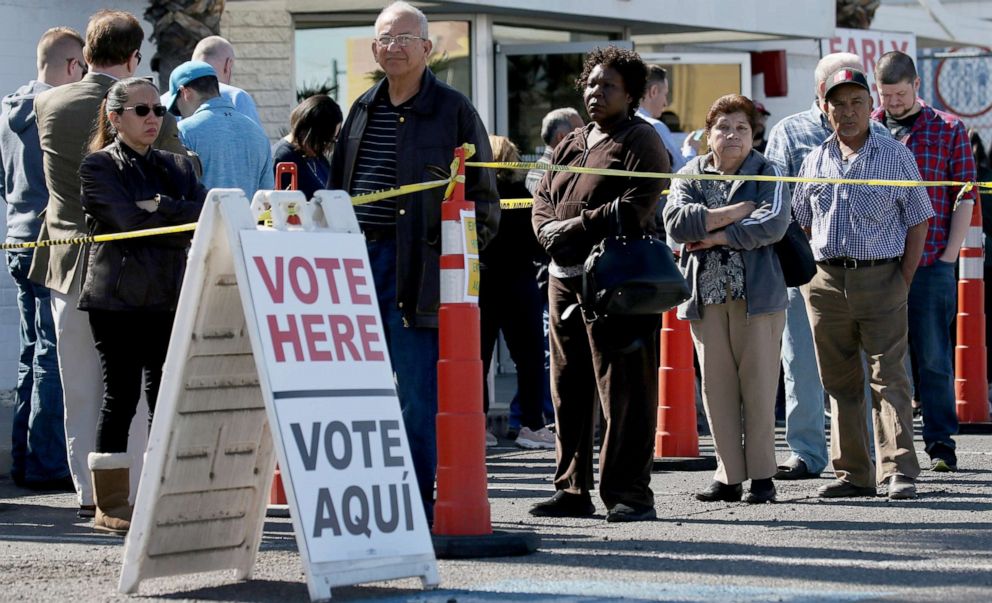
Candidates who reach the 15% threshold are considered "viable," at which point their support is locked in and cannot go down. Caucusgoers that are part of viable groups will have their presidential preference cards, which marks their choice for president, collected and their preferences will be locked in. The Nevada Democratic Party is encouraging participants not to leave after the first alignment, but noted that if caucusgoers are in a viable group after the first alignment, their choices are locked in, so the party cannot force them to stay.
The preference cards, which are available in English, Spanish and a new third option, Tagalog, are important for creating a paper trail.
For the caucusgoers that are part of nonviable groups, meaning they backed a candidate who failed to cross the 15% threshold, they have a few options in the second round, which is called realignment: they can move to a group supporting a viable candidate; they can join another candidate's nonviable group to help that candidate become viable; they can attempt to persuade other caucusgoers to join their group and earn enough support for their first choice to make them viable; or they can move to the uncommitted group.
In Nevada, there's a maximum of 15 minutes for each alignment. After realignment is over, caucusgoers fill out their presidential preference cards, sign it and turn it in. This is what is known as the final alignment. This cycle, the Nevada Democratic Party streamlined the caucus process, giving caucusgoers only up to two opportunities to declare their pick for president.
How will early voting be incorporated on caucus day?
Over four days, between Saturday, Feb. 15 and Tuesday, Feb. 18, Nevada Democrats were given the option to vote early, by heading to an early voting location within the county in which they are registered to vote to cast their vote. On a paper ballot, voters ranked a minimum of three candidates and a maximum of five candidates on their ballots in order to reflect the two-step caucus process. Ballots from early voters will be counted on caucus day at voters' home precinct sites, so early vote totals won't be released prior to Saturday.
After the first alignment, the number of early voters who picked a respective candidate as their first choice will be announced, and added to the groups to determine which candidates reach viability. Those early voters, like the in-person caucusgoers, will then be locked in with that viable candidate.
If an early voters' first choice is not viable after the first alignment, but they become viable after realignment -- and early voters' first choice are included when determining viability -- then they'll still be locked in with their first-choice candidate.
If an early voters' first choice isn't viable after realignment, then their vote will go to the next viable candidate from their rankings. If no candidates on an early voter's ballot are viable after realignment, essentially their vote doesn't count.
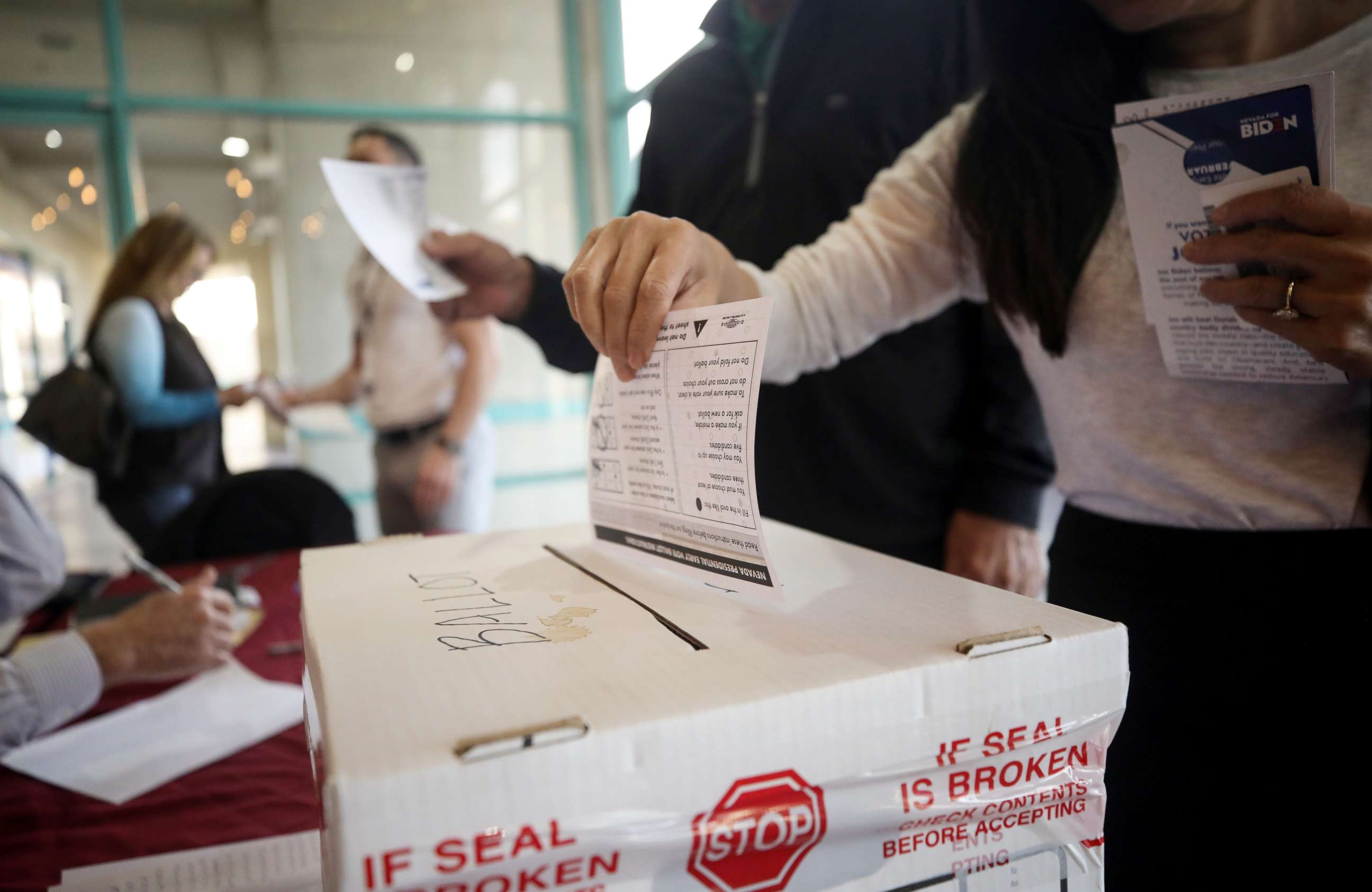
What results will the state party report on caucus day?
As mandated by the DNC, for the first time, the Nevada Democratic Party will report three different results: the total vote from the first alignment, which is considered to be the popular vote of all the people who walked in the room and caucused; the total vote after the final alignment, which reflects the top consensus-builders of the night; and the county convention delegates, which correlate to candidates' performance. County convention delegate results determine national delegates, and will only be awarded to only viable candidates.
ABC News will use the county delegates results to project a winner.
The party will also report the total number of early voters included in each precinct, the total turnout for each precinct and, by the end of the night, national delegates.
Similar to Iowa, the Nevada Democratic Party will report out results as they come in from each precinct. All results from a given precinct will be reported at one time.
How has Nevada changed the reporting process since Iowa?
Among the key changes that the state party implemented post-Iowa is a "caucus calculator," which will assist precinct chairs "in completing caucus math as well as incorporate early vote data," according to a Feb. 13 memo from the party.
The caucus calculator will only be used on party-purchased iPads -- not on personal devices as was the case for the app in Iowa -- and will be accessed through "a secure Google web form." The calculator will only be "provided" to and "pre-configured" for trained precinct chairs to determine viability and award delegates.
The calculator will have a built-in caucus math formula to calculate totals for the precinct chairs, by combining the caucus day data with the early vote data.
A Nevada Democratic Party official confirmed to ABC News that the presidential campaigns were given a live demonstration of the new tool, and volunteers, who received updated training through webinars on Saturday, began hands-on training on Tuesday.
The calculator will mirror the math worksheets and the caucus math poster that have been used in previous cycles to calculate results. The precinct chairs will be given a unique "passphrase" in their caucus day packets to log in to the calculator.
The calculator will help tabulate viability and delegate totals for the precinct chairs, and the party will be able to review results through the calculator, but the primary method for reporting to the party's HQ will be through a secure hotline for precinct chairs. Precinct chairs are also expected to fill out the caucus reporting sheets as well and take a photo of the completed worksheet and send it to the party. The worksheets will serve as the state party's paper trail in order to conduct a recount if necessary. Precinct chairs are not required to use the calculator, and can simply rely on paper worksheets if they prefer.
In the memo, the party said that it had consulted with the DNC, the Department of Homeland Security and "independent security and technical experts" regarding the calculator. The party is also consulting "experts at Google," so they are aware that the party is using its program and ensuring the security of the tool.
The state party, under far more scrutiny after Iowa, put in place a number of redundancies for caucus day. Their multi-step reporting process includes "a two-source verification process where data will first be reported" through "a secure hotline to a trained operator" and one other additional source, either the calculator or the reporting sheet.
If any of the precinct chairs have issues with the iPad or connectivity issues, there are paper back-ups in place, in which the precinct chair will have to manually determine viability and the final delegate totals. The party will have a public-facing voter protection hotline number; a secure, dedicated hotline for precinct chairs which will be made available only to them on caucus day; and an internal hotline for non-reporting related issues, according to a Nevada Democratic Party official. The party is also currently recruiting tech volunteers to be at caucus day sites to help troubleshoot "in real-time."
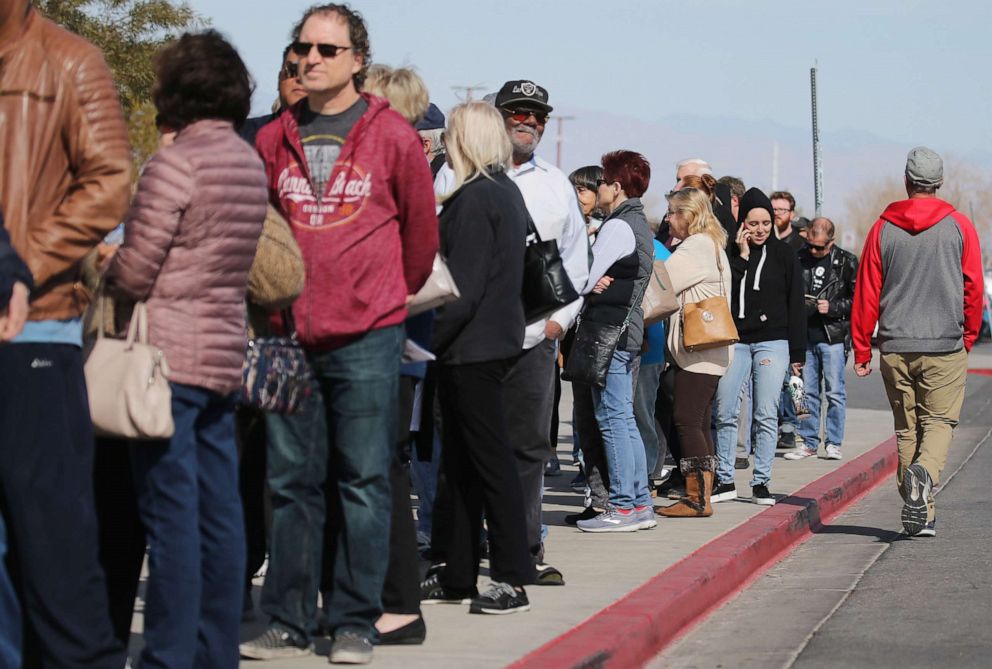
But after Iowa, Nevada is facing heightened scrutiny over the entire caucus process.
On Wednesday, the Associated Press reported that Perez, the DNC chairman, said that a number of factors, particularly, early voting and potentially high turnout, could affect the tabulation and timing of results, without committing to releasing the unofficial results on Saturday, the day of the vote.
But the state party told ABC News on Thursday that its plan is still to release results on caucus day.
"The Nevada Democratic Party's No. 1 priority is accuracy when reporting results because we understand just how important it is that we get this right and protect the integrity of Nevadans' caucus preferences," said Molly Forgey, communications director for the Nevada Democratic Party. "While the additional reporting requirements will slow the process from prior caucuses, our plan is to be able to release results on Caucus Day."
What would a recount look like in Nevada?
The recount procedures outlined by the Nevada Democratic Party reflect Iowa's version of a recanvass. Both the Sanders and Buttigieg campaigns requested partial recanvasses in Iowa.
The Nevada Democratic Party define a recount as "a hand review of every precinct Caucus Reporting Sheet, the certified final expression of preference and record of awarded delegates, and a manual retabulation of caucus results from the precinct level to the statewide level to ensure the accuracy of announced statewide caucus night results."
Reviewing the preference cards is not a source for the review of caucus results.
